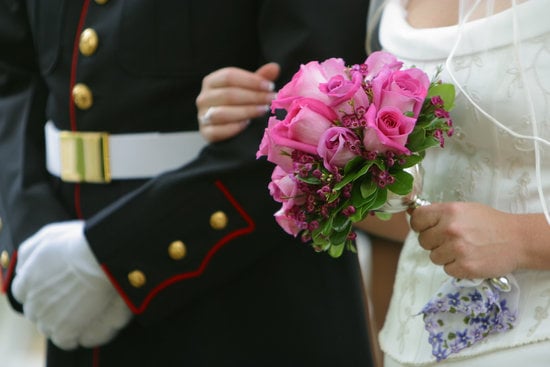Do you have to wear a wedding dress? The answer to this question may seem simple, but as we delve into the traditions and expectations of wedding attire, the decision becomes more complex.
From the classic white gown to unconventional alternatives, the choice of wedding attire is deeply rooted in cultural, religious, and personal significance. In this article, we will explore the evolution of wedding dress styles, the global perspectives on wedding attire, breaking tradition with alternative options, navigating societal pressures, and practical considerations such as comfort, budget, and venue.
The concept of a traditional wedding dress has evolved significantly over time. What was once limited to a specific style and color has now opened up to a wide array of options that cater to individual tastes and preferences. As we examine the historical and modern significance of wedding attire, it is clear that cultural and religious influences play a significant role in shaping these traditions.
In addition to exploring the various factors that influence the choice of wedding attire, we will also discuss the pressure that couples may feel to adhere to these traditions. Whether it’s navigating family expectations or societal ideals, the decision to break tradition and embrace non-traditional wedding attire can be a challenging yet empowering choice for many couples.
So let’s embark on this journey together as we uncover the diverse world of wedding attire and celebrate the freedom to choose our own unique styles for this special day.
The Evolution of Wedding Dress Styles
Classic Elegance
For many years, the classic white wedding dress has been synonymous with purity, tradition, and timeless elegance. This style often features a full skirt, delicate lace or beadwork, and a veil. However, as times have changed, so too have the preferences of modern brides. While some still choose to embrace this classic look, others are exploring alternatives that better reflect their personal style and personality.
Modern Twists
In recent years, there has been a surge in non-traditional wedding dress styles. This includes contemporary silhouettes such as jumpsuits, separates, pantsuits, or even colored dresses. Designers are increasingly pushing the boundaries by incorporating unique fabrics, avant-garde designs, and unexpected details into their collections. The rise of bohemian and vintage-inspired gowns also reflects a shift towards more relaxed and laid-back bridal looks.
Cultural Influence
Furthermore, the evolution of wedding dress styles is not limited to Western traditions. Cultures around the world boast an array of diverse wedding attire that varies from region to region. From vibrant saris in India to elaborate kimonos in Japan or traditional African wedding garments-each culture infuses its own customs and symbolism into bridal fashion.
As we continue to witness the ever-changing landscape of wedding attire, it’s clear that brides today have more freedom than ever before to express themselves through their choice of gown. Whether choosing a classic ball gown or a daring alternative, modern brides are embracing individuality and creativity when it comes to their wedding dress selection.
The Cultural and Religious Significance of Wedding Attire
Wedding attire is a reflection of culture and tradition, and its significance varies greatly across different cultures and religions. Here are some examples of the cultural and religious significance of wedding attire from around the world:
- In traditional Chinese weddings, the color red is symbolic of good luck and joy, so brides often wear red dresses or incorporate red into their attire.
- Indian weddings are known for their vibrant and elaborate bridal attire, with brides typically wearing colorful sarees or lehengas adorned with intricate embroidery and beading.
- In Jewish weddings, there are specific customs regarding the bride’s attire, such as wearing a veil during the ceremony. The dress is often modest and in line with Jewish customs.
- Muslim brides may wear a hijab or headscarf as part of their wedding attire, in adherence to Islamic traditions of modesty.
It’s important to remember that wedding attire holds deep cultural and religious symbolism for many people around the world. Understanding and respecting these traditions can add a meaningful dimension to the wedding celebration.
In addition to cultural significance, religious beliefs also play a significant role in determining wedding attire. For example:
- In Christian weddings, white has traditionally been the symbol of purity and innocence for the bride. While not mandatory, many Christian brides still opt for white gowns.
- Hindu brides often wear red as it is considered auspicious, symbolizing fertility and prosperity.
- In Sikh weddings, the bride may choose to wear a traditional outfit such as a salwar kameez or lehenga, while adhering to modesty guidelines.
Understanding the cultural and religious significance of wedding attire allows us to appreciate the diversity of traditions around the world. It also underscores the importance of respecting these customs when attending or planning weddings that draw from different cultural or religious backgrounds.
Breaking Tradition
When it comes to wedding attire, the traditional white wedding dress has long been the standard. However, modern brides are increasingly opting for non-traditional alternatives that better reflect their personal style and preferences. There are many options to consider when breaking away from the traditional wedding dress, allowing couples to make a statement and celebrate their individuality on their special day.
Here are some popular alternatives to the traditional wedding dress:
- Jumpsuits: Chic and modern, jumpsuits have become a fashionable choice for brides who want to defy convention and make a bold fashion statement on their wedding day.
- Separates: Mix and match tops and skirts or pants can create a unique look that is stylish and versatile. This option allows brides to showcase their personal style by selecting separate pieces that complement each other.
- Colored Dresses: Embracing color is a beautiful way to express individuality. From soft pastels to vibrant hues, colored wedding dresses add a pop of personality to the big day.
As traditions evolve and weddings become more personalized, breaking away from the traditional wedding dress is becoming more common. Couples should feel empowered to choose attire that reflects who they are as individuals and celebrates their love in a way that feels authentic to them. The key is finding an option that aligns with personal style, comfort, budget, and the overall vibe of the wedding celebration.
The Pressure to Wear a Wedding Dress
The decision to wear a wedding dress on your big day is a deeply personal choice that often comes with a variety of expectations from family, friends, and society. Many people feel pressure to adhere to tradition and choose a dress that fits the conventional image of a bride.
However, it’s important to remember that there are no hard and fast rules when it comes to wedding attire. Ultimately, the decision about what to wear on your wedding day should reflect your personal style, values, and comfort.
Despite societal expectations, the choice to wear a wedding dress is entirely up to the individual getting married. Some may feel that wearing a traditional white gown symbolizes purity and tradition, while others may find these customs outdated and prefer to express themselves in different ways. It’s crucial for couples to have open and honest conversations about their preferences for wedding attire in order to navigate any conflicting expectations.
One option for those who do not wish to wear a wedding dress is to explore alternatives such as jumpsuits, separates, or even non-white gowns. These choices can still be elegant and sophisticated while allowing individuals to break away from traditional norms. Ultimately, it’s essential for couples to feel comfortable and confident in their attire choice as they celebrate their love and commitment on their special day.
| Wedding Attire | Personal Choice |
|---|---|
| Traditional white gown | Symbols purity and tradition |
| Non-traditional attire | Allows individuals to break away from conventional norms |
Practical Considerations
When it comes to choosing wedding attire, practical considerations such as comfort, budget, and venue play a significant role in the decision-making process. While the idea of wearing a traditional wedding dress may be appealing to some, others may prioritize practicality over tradition.
Comfort
Comfort is key when it comes to choosing the perfect wedding attire. Brides who opt for a traditional wedding dress often have to consider the weight of the gown, the style of the bodice, and even the height of their heels. However, comfort doesn’t have to be compromised for style. There are plenty of non-traditional options that are both fashionable and comfortable.
Budget
The cost of a traditional wedding dress can often be quite high, especially when factoring in alterations and accessories. For many couples, sticking to a budget is an important consideration when planning their wedding attire. In this case, non-traditional options such as pantsuits or cocktail dresses can be more budget-friendly while still making a statement.
Venue
The location and theme of the wedding venue also play a crucial role in determining what type of attire would be most appropriate. For example, a bohemian-style outdoor ceremony might call for a more relaxed and flowy outfit, while a formal ballroom setting may inspire a more classic and elegant look. Considering the venue can help couples narrow down their options and choose attire that fits seamlessly with the overall aesthetic of their special day.
Celebrating Individuality
When it comes to choosing wedding attire, there is often a lot of pressure to conform to traditional expectations. However, more and more couples are embracing the idea of celebrating their individuality by opting for non-traditional wedding attire. The question “do you have to wear a wedding dress” is being challenged as people explore alternatives that better reflect their personal style and values.
One popular option for non-traditional wedding attire is the pantsuit or jumpsuit, which has become a fashionable choice for many brides who want to make a statement with their outfit. These modern alternatives are not only stylish but also provide comfort and freedom of movement, which can be important factors for brides who want to feel at ease on their special day.
Additionally, jumpsuits and pantsuits can be a practical choice for outdoor or unconventional wedding venues where a traditional gown may not be suitable.
Another way that couples are embracing non-traditional wedding attire is by incorporating cultural or ethnic elements into their outfits. For example, some brides choose to wear a traditional garment from their heritage or ancestral background, while grooms may opt for attire that reflects their cultural identity. This trend not only celebrates diversity but also adds a meaningful and personal touch to the wedding attire, making it truly unique and significant.
Conclusion
In conclusion, the question “Do you have to wear a wedding dress?” has been thoroughly explored, and the answer is clear: no, you do not. As we’ve seen, wedding attire has evolved over time, reflecting changes in cultural norms and individual preferences. Whether you choose a classic white gown, a non-traditional dress, a jumpsuit, or even a tuxedo, the most important thing is that you feel comfortable and true to yourself on your special day.
The pressure to conform to traditional wedding dress expectations is something many people face, but it’s important to remember that ultimately, the decision is yours. With practical considerations such as budget, venue, and personal comfort in mind, today’s couples have more freedom than ever to choose what feels right for them. This could mean embracing cultural or religious traditions with your attire, or breaking tradition entirely by opting for something unconventional.
In the end, celebrating individuality and personal choice remain at the heart of wedding attire decisions. The most significant aspect of your wedding day is the commitment you’re making to your partner – what you wear while doing so should be a reflection of your unique love story and personal style.
So when it comes to deciding on your wedding attire, remember that the answer to “do you have to wear a wedding dress?” lies not in tradition or expectations but in what makes you feel happiest on this momentous occasion.
Frequently Asked Questions
Is It Okay to Not Wear a Wedding Dress?
It is absolutely okay to not wear a wedding dress. Modern brides have countless options when it comes to choosing their wedding attire, and they should feel free to select whatever makes them feel comfortable and beautiful on their special day.
Whether it’s a pantsuit, jumpsuit, or separates, the most important thing is that the bride feels confident and happy in her outfit.
Does the Bride Have to Wear a Wedding Dress?
Traditionally, a bride is expected to wear a wedding dress. However, times have changed and the rules around wedding attire have become more relaxed.
While many brides still opt for a traditional gown, others choose to go with alternative options like suits, rompers, or even casual dresses. Ultimately, the decision of what to wear on one’s wedding day lies with the individual bride.
What Can a Bride Wear Instead of a Dress?
Brides who prefer not to wear a dress have several stylish alternatives at their disposal. Depending on their personal style and the formality of their wedding, they can consider wearing separates such as a skirt and top combo, a pantsuit, or a jumpsuit.
Additionally, rompers and tailored suits can also make for chic and unexpected bridal attire choices. Ultimately, the most important thing is for the bride to feel comfortable and true to herself on her big day.

I have been involved in marriages for over 20 years helping couples and singles understand more about them.





